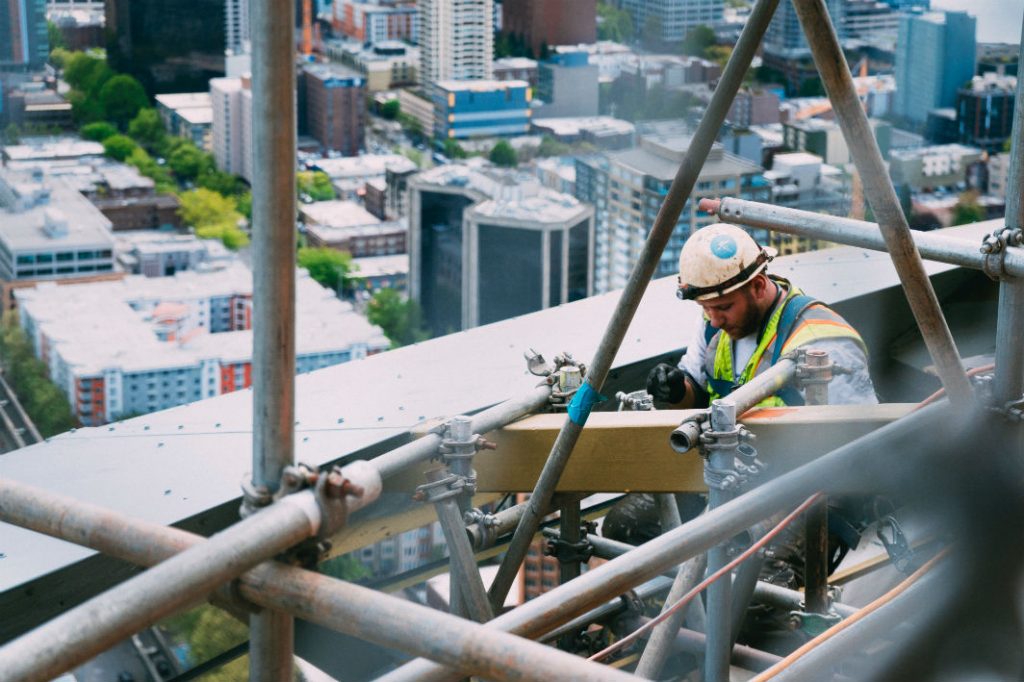“This article is over two years old. You may like to read our latest analysis on barriers to building green in 2021.”
What are today’s barriers to building green?
Buildings account for almost a fifth of greenhouse gas emissions in the UK; so green construction and retrofit is an important part of combatting climate change.
This being the case, it is unsurprising that energy efficiency legislation such as ESOS, SECR and the Minimum Energy Efficiency Standards (MEES) have come into being. ESOS, whilst not forcing actual installation of improvements, is there to catalyse energy and carbon efficiency across business estates.
Yet while such regulations represent the positives, there remain plenty of challenges muting the transition to truly commercial spaces.
What’s holding back greener UK buildings?
The World Green Building Trends 2018 Smart Market report is a well-respected document, that keeps a weather eye on global progress on sustainable building.
Positively, it advises the barriers to green building have declined over time although cost is still a concern. Its research shows that as part of the business case for green building, industry expects an increase in savings in operational costs within five years.
But more crucial barriers remain. The greatest, according to the paper, are higher perceived or actual first time costs for more sustainable buildings.
This is interesting given many businesses investments, sustainability included, take time to payback and this is a common business concept, which shouldn’t necessarily hinder sustainability.
Perhaps the truth is simply that where finance is limited, energy efficient and greener offices cost more to set up, even though they have a higher value down the line. For those whose finance is tight, this could be the deciding factor.
The second top barrier to green buildings in 2018 was lack of political support or incentives. The report is making a vital point. Without energy efficiency legislation, and without the political will to maintain them, there is always the possibility that the transition to low carbon business and buildings may falter or even fail.
This would have telling impacts, both on the UK’s carbon emissions and the higher costs of business associated with emissions-heavy estates.
The message is plain
It seems clear from this detailed research paper that UK business urgently needs government to maintain its pro-carbon stance.
The report summarises that among the most compelling elements of the data are the strong business benefits reported for both new green buildings and green renovations/retrofits of existing buildings.
The findings since 2012 have clearly demonstrated the value of investing in green. And the numbers go further, pointing to steady growth since 2012 in the number of owners who see a 10% or greater increase
in asset value for new green buildings compared with traditional ones.
One of the most encouraging trends is the increasing percentage of respondents who expect to do the majority of their projects (more than 60%) green in most of the 20 countries/regions included in the study.
The global average for this green group is expected to increase from 27% to 47% between 2018 and 2021. But for this to happen worldwide and in the UK, it’s essential we hold onto business energy efficiency legislation, which is quietly catalysing and supporting our low carbon buildings revolution.

